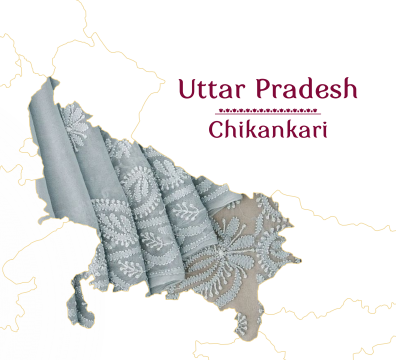
Tanchoi
Tanchoi is one of the weaving techniques involving a single or double warp and two to five colors on the weft which are often of the same shade, on Silk fabric. Famed for the intricate and small weaving patterns over the fabric, the commonly used patterns used are those of flowers, small birds in flight, peacocks, and parrot motifs. In fact, Tanchoi sarees are one of a kind that has spots all over the surface and is woven with a dual-color wrap. Another stand-alone feature of the Tanchoi sarees is that the fabric texture background has a Satin finish. Some extra threads are added to give the saris an appearance of being embroidered.
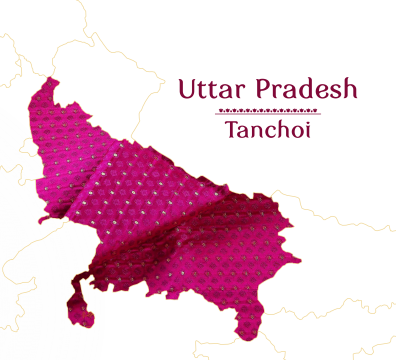
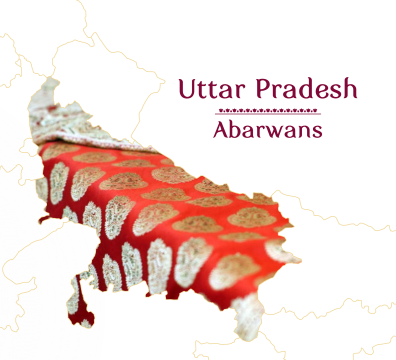
Abarwans
Abarwan Banarasi sarees meaning woven water, boasts of a silk wrap with a zeri weft. The transparent tissue materials of these saris when woven with finest of silks give an impression of flowing water, hence the name abarwan. Border of these types of saris reflect a diamond pattern with paisley motifs. The more traditional tissue saris encompass designs like JunglaButidaars, Shikargah Menadar etc. Because of their high gold brocade designs, they are the most expensive variant of Banarasi brocades and are highly popular as bridal sarees.
Banarasi
Banarasi Silk (also known as Benarasi Silk) is a fine variant of Silk originating from the city of Varanasi in Uttar Pradesh, India. Saree woven from this fine silk, known as a Banarasi Silk Saree is extremely popular all over India and across the world.
The art and culture of providing Banarasi sarees with silks is very ancient. The continuations of passing down the culture of artistry of the Banarasi saris from one generation to another have never been stopped. Today’s Banarasi Silks are the product of this particular mix up of two different cultures and exemplary enthusiasm of Mughals. In the earlier times, silk for Banarasi Sarees were being imported from China, now it has been provided by the southern part of India.
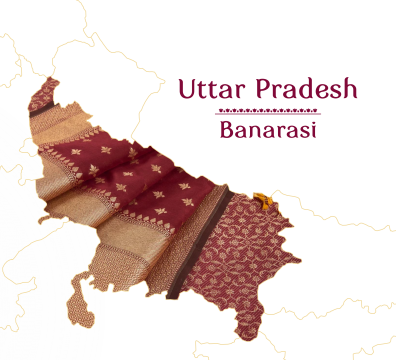
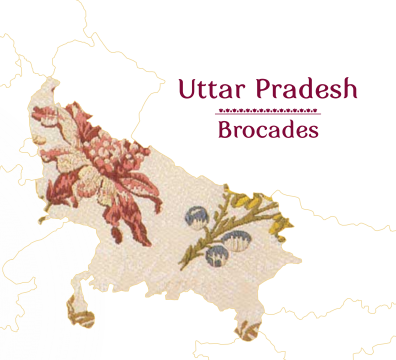
Brocades
Brocade is an ornate shuttle-woven fabric, often made with colorful threads silk, cotton, polyester, and sometimes with gold and silver threads. Brocade is originally a Kurdish word in Arabic is sometimes pronounced as ‘Brocar’. The word ‘Bro’ means the prophet and the word ‘Car’ means job or craft.
Brocade, in textiles, woven fabric having a raised floral or figured design that is introduced during the weaving process, usually by means of a Jacquard attachment. The design, appearing only on the fabric face, is usually made in a satin or twill weave. The background may be twill, satin, or plain weave. The rich, fairly heavy fabric is frequently used for evening dresses, draperies, and upholstery.
Chikankari
The meaning of ‘Chikankari’ is ’embroidery’ and the word is derived from the Persian expression, ‘Chakeen’ or ‘Chakin’ which relates to the formation of fine ‘needle work’ designs on cloths. It is believed that initially ‘Chikankari’ was introduced in Lucknow (capital city of Uttar Pradesh) and that was when the Mughals ruled the country; the major motivation factor behind the creation of ‘Chikankari’ was the Persian designs.
The basic cloth used for ‘Chikankari’ creation are ‘chiffon’, ‘muslin’, ‘georgette’, ‘silk’, etc, and for embroidery work, white yarn is used. That being said, yarns of different colors are also made use of for the same these days; besides, extra decoration works are also done using ‘Badla’, ‘Mukaish’, ‘Beads’, ‘Kamdani’, ‘Mirrors’, and ‘Sequins’.
